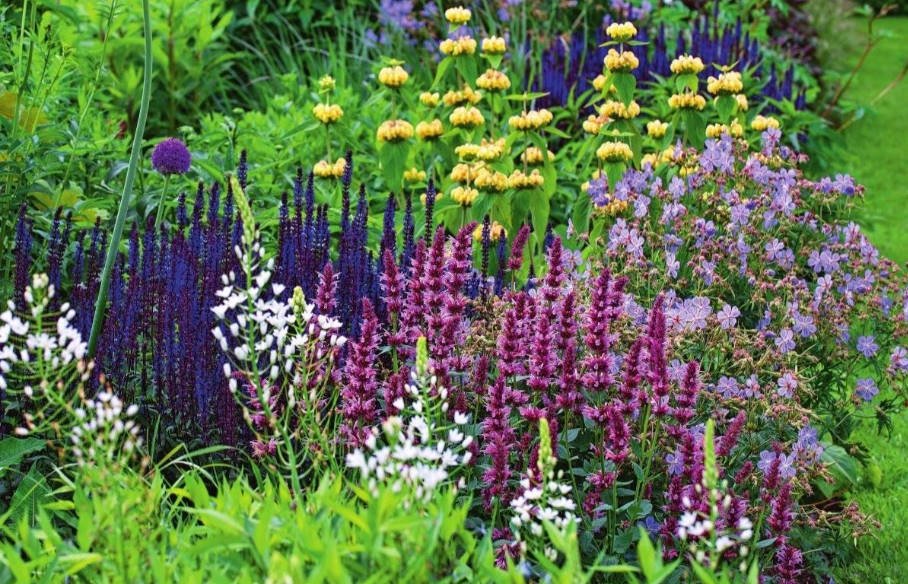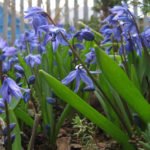Europe has been gripped by a real “purple fever” in recent years. Probably, the magical appeal of this noble color is due to the fact that it combines contrasting energies: calm blue and active red. Do you want to be in the trend of landscape fashion? Place plants with purple flowers in your favorite garden! The mysterious lilac color sharpens the senses and adjusts to a romantic mood. Introducing the best candidates.
In the first photo of this article:
- dark purple sage frost-free ‘Caradonna’;
- Agastache mexicana ‘Cotton candy’;
- decorative bow;
- blue-blue geranium pratense ‘Mrs. Kendall Clark’;
- and light yellow Phlomis russeliana;
.
The “Pets” look even more irresistibly with lilac flowers in the company of plants in a sunny yellow floral design, because purple and yellow are complementary, and therefore perfectly harmonious combinations. If you do not consider yourself a fan of bright yellow flowers, you may like the types of with lemon-green inflorescences, for example, Alchemilla or euphorbia characias – our purple heroes will make up the same bright and intriguing tandem with them.
And, of course, one more group of suitable candidates should be mentioned — representatives of the flora with lemon or yellow-green leaves. Some shrubs, such as barberry ‘Maria’ and Ligustrum ‘Aurum’, as well as many herbaceous perennials can boast of such an “outfit”.
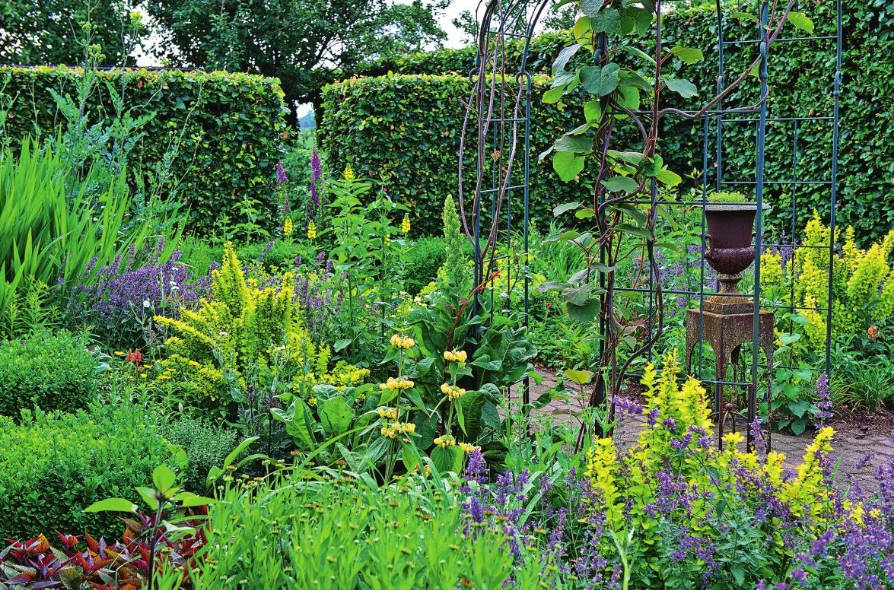
The combination of nepeta with light purple flowers and barberry with yellow-green leaves is impressive. Thermopsis hairy blooms in the background.
So, for flowerbeds in partial shade and corners protected from the scorching rays of the midday sun, for example, myosotis ‘King’s Ransom’ is suitable. But in sunny plantings for purple “stars” you can find many colorful partners among herbs, for example Salvia officinalis ‘Icterina’ or originum vulgare ‘Thumbles’.
Nepeta sibirskaya ‘Souvenir d’Andre Chaudrona’ feels great under the Alba Sail. To his left, the delphinium ‘Blue Gentian’ is just beginning to bloom.
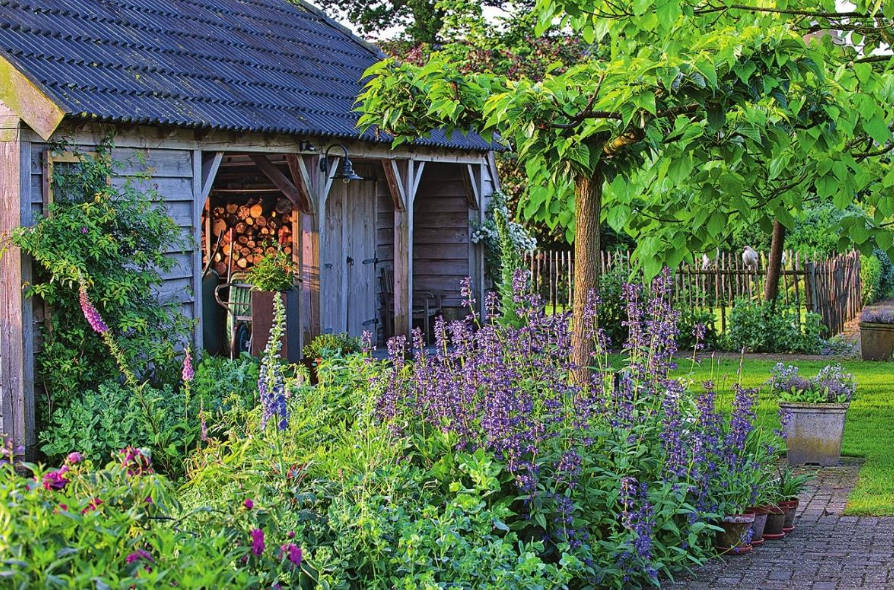
Siberian Nepeta ‘Andre Chaudron’s Souvenir’ and delphinium ‘Blue Gentian’.
On the left: “Candles” and “balls” in a pair always look catchy, which is why the tandem of Lupin and Allium giganteum looks so good. Onion inflorescences reach more than 10 cm (3.9 in) in diameter. Even when the plant blooms, the plantings will continue to decorate its decorative testes. On the right: Sylvestris mallow with its beautiful flowers is able to bloom and decorate the garden, in addition, it can be used in salads, because they are edible. In addition, this biennial plant blooms for an incredibly long time — from June to September.
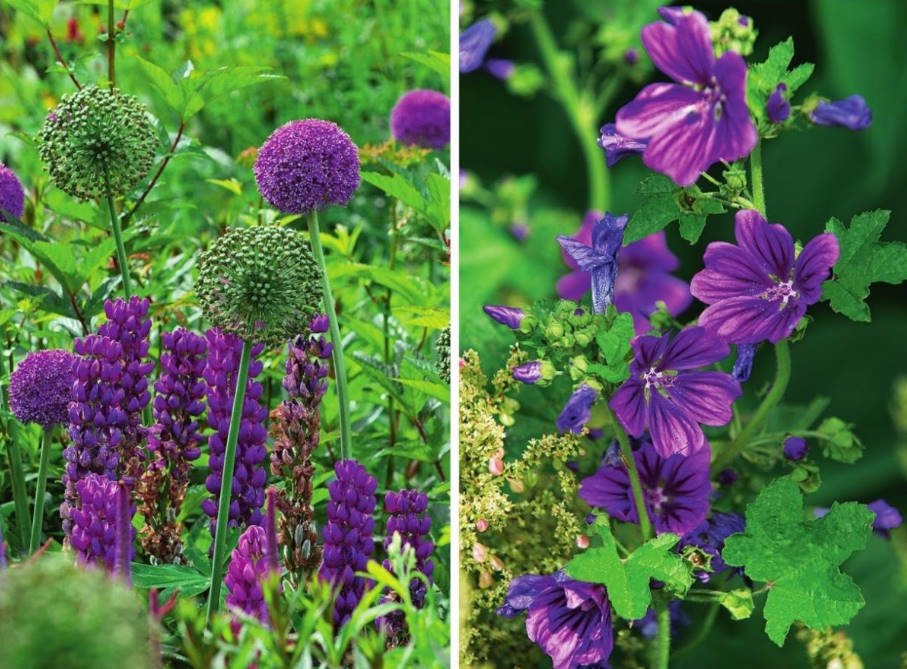
Left: lupine tandem and Allium giganteum. Right: Malva sylvestris.
Lavender is a thermophilic Southerner, so ideally it should be planted on raised flower beds with stone or brick retaining walls or near walls lined with the same materials: they have the ability to accumulate solar heat well.

Lavender is a heat-loving Southerner.
Cornus controversa ‘Variegata’ the lilac inflorescences of Nepeta seemed to glow in the “window” because of the leaves of chestnut and hosta.
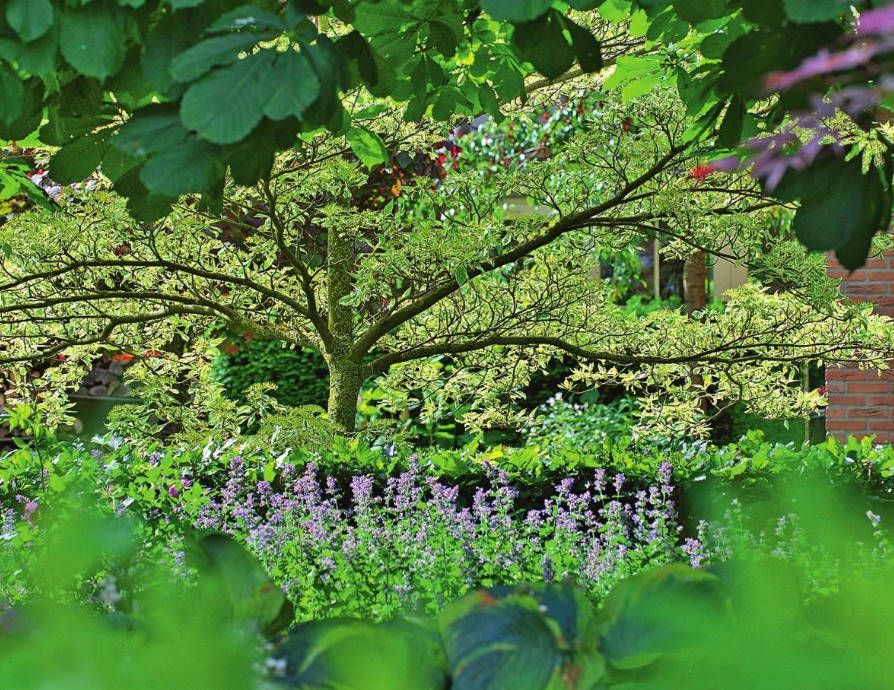
Cornus contraversa and Nepeta
